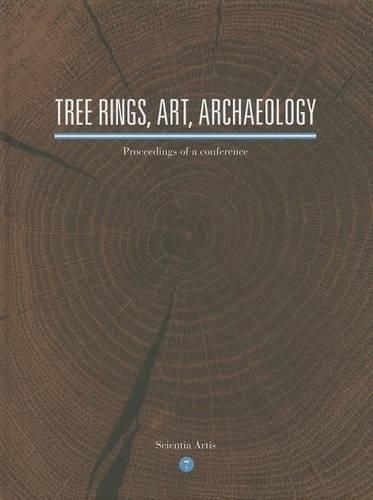Readings Newsletter
Become a Readings Member to make your shopping experience even easier.
Sign in or sign up for free!
You’re not far away from qualifying for FREE standard shipping within Australia
You’ve qualified for FREE standard shipping within Australia
The cart is loading…






In 2010 IRPA-KIK organized the Tree Rings, Art, Archaeology conference. The various articles gathered in the proceedings reflect the practices of fifteen European countries. The first objective of the conference was to review the notable advances over the last ten years. The second aim, focused more on the future, was to bring together dendrochronologists and other players in the field - historians, archaeologists and art historians - to discuss the ‘Good use of dendrochronology’. The articles successively explore the different facets of the dendrochronological prism. Indeed, dendrochronology is a discipline at the crossroads of human, exact and natural sciences. This explains the disparity in the training of dendrochronologists. Botanists, statisticians and archaeologists each provide their version of dendrochronology, while respecting the fundamental principles of the method. From this follows a multiplicity of applications under a single label. Dating is not considered as an end in itself, but as a single indication - among others, whether archaeological, historical or artistic -, which the dendrochronologist complements with other information obtained from his measurements, e.g. the origin of the wood, growth type, environment, etc. However, the dendrochronologist alone cannot explain the entirety of a research question. The need to compare different approaches is self-imposed and serves to enrich or even to question an approach that remains necessarily empirical, and whose conclusions are irremediably tentative.
$9.00 standard shipping within Australia
FREE standard shipping within Australia for orders over $100.00
Express & International shipping calculated at checkout
In 2010 IRPA-KIK organized the Tree Rings, Art, Archaeology conference. The various articles gathered in the proceedings reflect the practices of fifteen European countries. The first objective of the conference was to review the notable advances over the last ten years. The second aim, focused more on the future, was to bring together dendrochronologists and other players in the field - historians, archaeologists and art historians - to discuss the ‘Good use of dendrochronology’. The articles successively explore the different facets of the dendrochronological prism. Indeed, dendrochronology is a discipline at the crossroads of human, exact and natural sciences. This explains the disparity in the training of dendrochronologists. Botanists, statisticians and archaeologists each provide their version of dendrochronology, while respecting the fundamental principles of the method. From this follows a multiplicity of applications under a single label. Dating is not considered as an end in itself, but as a single indication - among others, whether archaeological, historical or artistic -, which the dendrochronologist complements with other information obtained from his measurements, e.g. the origin of the wood, growth type, environment, etc. However, the dendrochronologist alone cannot explain the entirety of a research question. The need to compare different approaches is self-imposed and serves to enrich or even to question an approach that remains necessarily empirical, and whose conclusions are irremediably tentative.